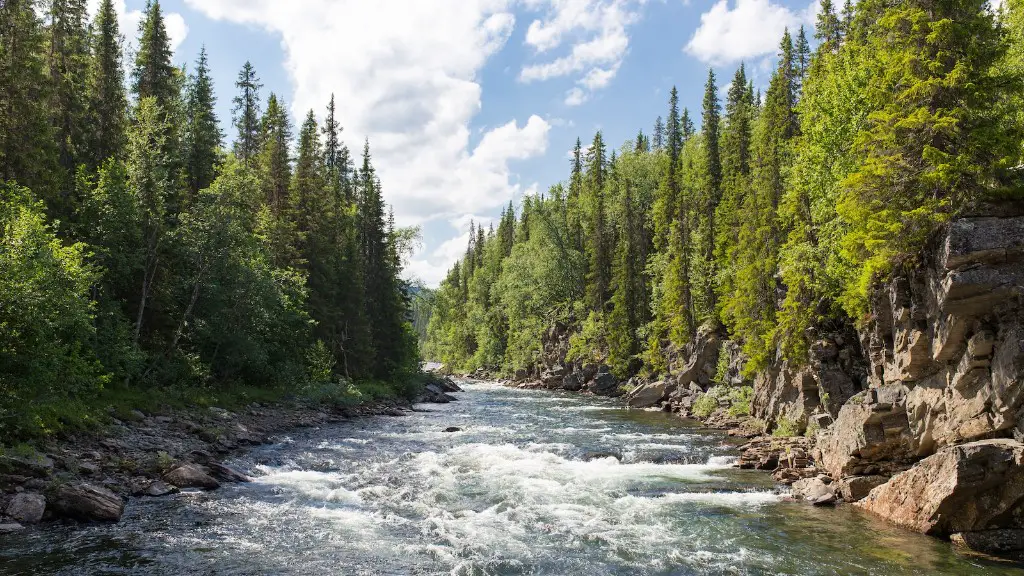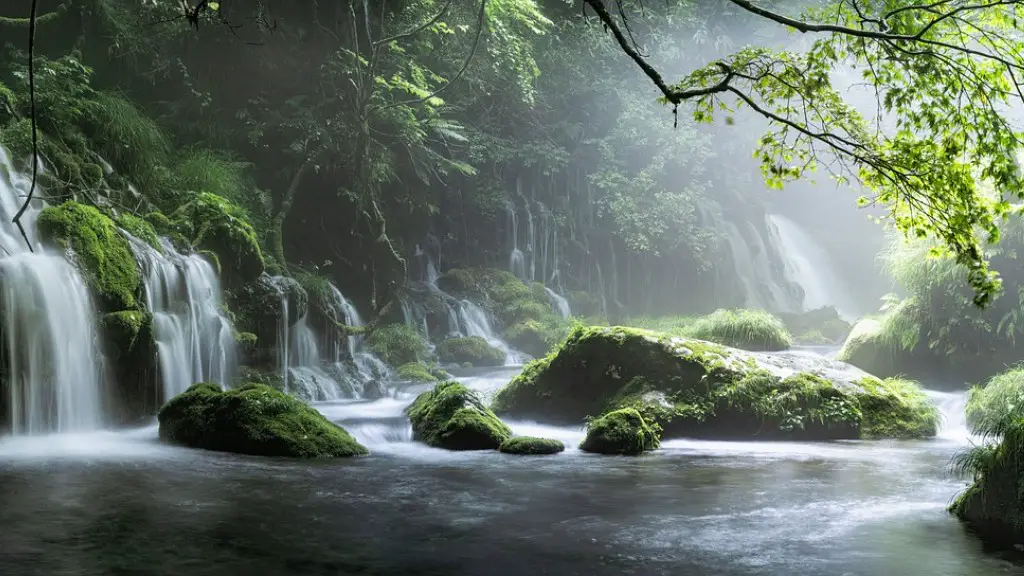In today’s day and age, the safety of swimming in the River Nile is becoming a pressing issue. The Nile is one of the world’s longest and oldest rivers, stretching over 4,000 miles northwards through eleven countries and playing a major role in Egyptian, Nubian and African culture. The Nile also provides water to over 270 million people who use it daily for domestic and agricultural purposes. However, the health risks associated with swimming have made people wary of its safety.
Having traveled locally and internationally, the Nile is susceptible to all sorts of industrial chemicals, plastic microfibres, agricultural runoff, and hazardous mixtures that can severely damage the water system. The presence of bacterial and protozoan pathogens, such as Escherichia coli, can also cause gastrointestinal diseases, ear and skin infections, and reproductive problems.
In fact, a research study conducted in 2019 by the Food Safety Authority of Egypt (FSAE) investigated the effect of water pollution on the microbial quality of the River Nile, analyzing five samples from microorganisms to assess the levels of contamination. The results showed that microbe levels exceeded the health limit set by the EU and the World Health Organization, providing evidence that the water was not safe for swimming.
Moreover, high concentrations of sodium and phosphorus can be present in the Nile due to improper waste disposal and sewage treatment. This can be harmful when people are exposed to pollutants in the water, which can cause irritation to the skin, eyes and throat, as well as other health problems such as respiratory diseases.
Experts have also warned that since the population of Cairo is claiming a major part of the Nile’s water, it has decreased the water flow in the river and lowered the water level, creating stagnant and sheltered water. This has in turn increased the presence of mosquitoes and disease-carrying mosquitoes and in particular the risks of getting malaria and dengue fever.
Amidst the vast sea of reports and studies, there still remains a grey area. Locals usually use the River Nile because there are not any alternative options. They do swim into the River Nile’s waters for things such as fishing and cleaning, but would not enter for recreational purposes. Despite the studies that indicate that swimming in the River Nile may be hazardous to health, people currently have no choice but to use the river for their daily needs.
Industrial Pollution
Studies conducted have indicated that the River Nile has been severely affected by industrial pollution. The presence of pollutants such as lead, mercury, and arsenic have caused the water’s quality to deteriorate drastically leading to a range of health issues. For example, a research conducted in 2020 on the industrial pollutants present in the river reported that the average of lead concentration was 28.8 μg/l which is dangerously high. There have been reports of increased incidences of lead poisoning among the population in Egypt polluting the River Nile through aluminium and steel industries.
Furthermore, the poor quality of the River Nile is also affected by oil spills and chemical discharges from boats and industrial sewage. These oil spills not only affect the biodiversity in the river, but also contaminate the water, thus decreasing its usability. All of these factors contribute to the River Nile’s growing vulnerability of becoming severely polluted with little to no control.
The presence of water-borne diseases is a major concern for health experts as it is highly dangerous for organisms to come in contact with humans. Poor sanitation around the river has exacerbated the problem and has contributed to diseases such as dysentery, cholera and typhoid to spread around.
Overall, experts have urged the government to take preventive measures to eliminate water-borne diseases and maintain safety for both the environment and people.
Solutions
In response to the deteriorating quality of the River Nile, various steps have been taken to restore its cleanliness. There have been increased efforts to control water source pollution and respond to significant water contamination incidents. The government has ordered vulnerable locations to take effective measures in building and maintaining sewage systems and industrial plants to reduce the amount of pollutants being released in the river.
Additionally, the United Nations Development Programme (UNDP) has established the Nile Basin Initiative (NBI), which works with governments to provide evidence-based solutions that would enhance economic and social rights while minimizing water pollution. The NBI focuses on finding innovative solutions to tackle water management and improve the flow of water in the river.
Government campaigns have also been launched to promote greater public involvement in the management and preservation of the River Nile. These include campaigns providing resources for education and awareness, as well as a call for volunteers to participate in river cleanups.
The latest initiative, called “Nile for Life”, raises awareness about the importance of protecting the river, encourages sustainable practices, and educates people about the importance of the Nile in our lives. This campaign has been successful in providing the population with knowledge and support in making sustainable decisions in regards to the conservation of the Nile.
Conclusion
In conclusion, the River Nile deteriorates in quality day by day and it is not safe to swim in it. This has been proven through several reports and studies conducted by health experts. The presence of hazardous pollutants is highly dangerous for humans and aquatic animals, and particularly for those who come into contact with the river such as fishermen and boat operators. Therefore, it is essential that the government takes necessary measures to avoid further contamination and protect the River Nile and its people. Having said that, initiatives such as the “Nile to Life” campaign have brought to light the importance of the river in the country, thus highlighting the need to conserve it.
Governance
The River Nile, like the sea and other natural resources, requires an effective governance system in order to preserve and protect it. An important part of this system is the enactment of laws, regulations, norms and standards that prevent people from polluting and exploiting the river. The government of Egypt has set forth a legislative framework that allocates powers to each level of government to protect and control water resources, though the enforcement of these rules remain weak.
Moreover, establishing a clear governance model can help in decision-making, providing information about the River Nile, providing resources for implementation and monitoring, and improving the flow of water. However, it is important to note here that this model should be based on an integrated approach taking into consideration all aspects of the river – from its ecology to its socio-economic aspects. This is essential in order for it to address the problems raised concerning its safety.
The implementation of the legislation also requires a greater accountability and enforcement of the existing laws and regulations. The local authorities should be given more powers to combat pollution and water-related issues, and any violations should be met with strict penalties. Furthermore, there should be measures in place to review and update the laws when necessary, while engaging stakeholders in the decision-making process.
Role of Other Parties
The protection and management of the River Nile should not be left solely to the governments. Other parties must play an active role in its conservation by taking measures such as implementing corporate environmental policies in their industries and businesses, as well as implementing stringent safety standards. They should also be held accountable for any pollution caused, and any negligence should be severely punished.
The role of the media is also essential. It can play an important part in raising public awareness about the importance of the River Nile. This is especially true given the current situation and the uncertainty caused by the lack of information and resources provided by the authorities. The media can help in creating a collective voice of Egypt’s people, thus mobilizing public opinion to create public pressure and demand better governance of the river.
Environmental NGOs and activists can help by introducing solutions and strategies to help protect the River Nile, such as raising funds for conservation projects and monitoring the river’s water quality. Innovative technologies can also be used to detect and slow down water contaminants, and deter illegal dumping of waste in the river.
Technology Solutions
In recent years, innovative solutions such as artificial intelligence (AI) have been embraced by the authorities to enhance safety of the River Nile. By leveraging AI technologies, the government can detect and pinpoint sources of water pollution. Additionally, AI can help monitor river water quality, detect health risks from water contaminants, and alert people of any hazardous water sources. Moreover, AI can also be used to track water flows, to prevent over irrigation and illegal pumping of water.
In addition, new technologies such as satellite imagery can be used to gain an overview of the river. These images can be customised with navigation charts which can provide useful information about areas of the river that should be avoided or cleared.
Moreover, the use of drones has increasingly become a norm in the area of safety and surveillance, and can be used to inspect the river’s status on an hourly basis. Drones can also be deployed to monitor water levels and contamination, thus aiding in the development of more effective conservation and safety policies.
Finally, in order to reduce the risks of pollution and protect the River Nile, there are numerous advancements in water treatment and purification technologies that can be employed. These methods can include UV treatments, chemical treatments and membrane filtrations. All of these are effective ways of cleaning and purifying water to ensure a safer, cleaner and healthier environment for everyone.





